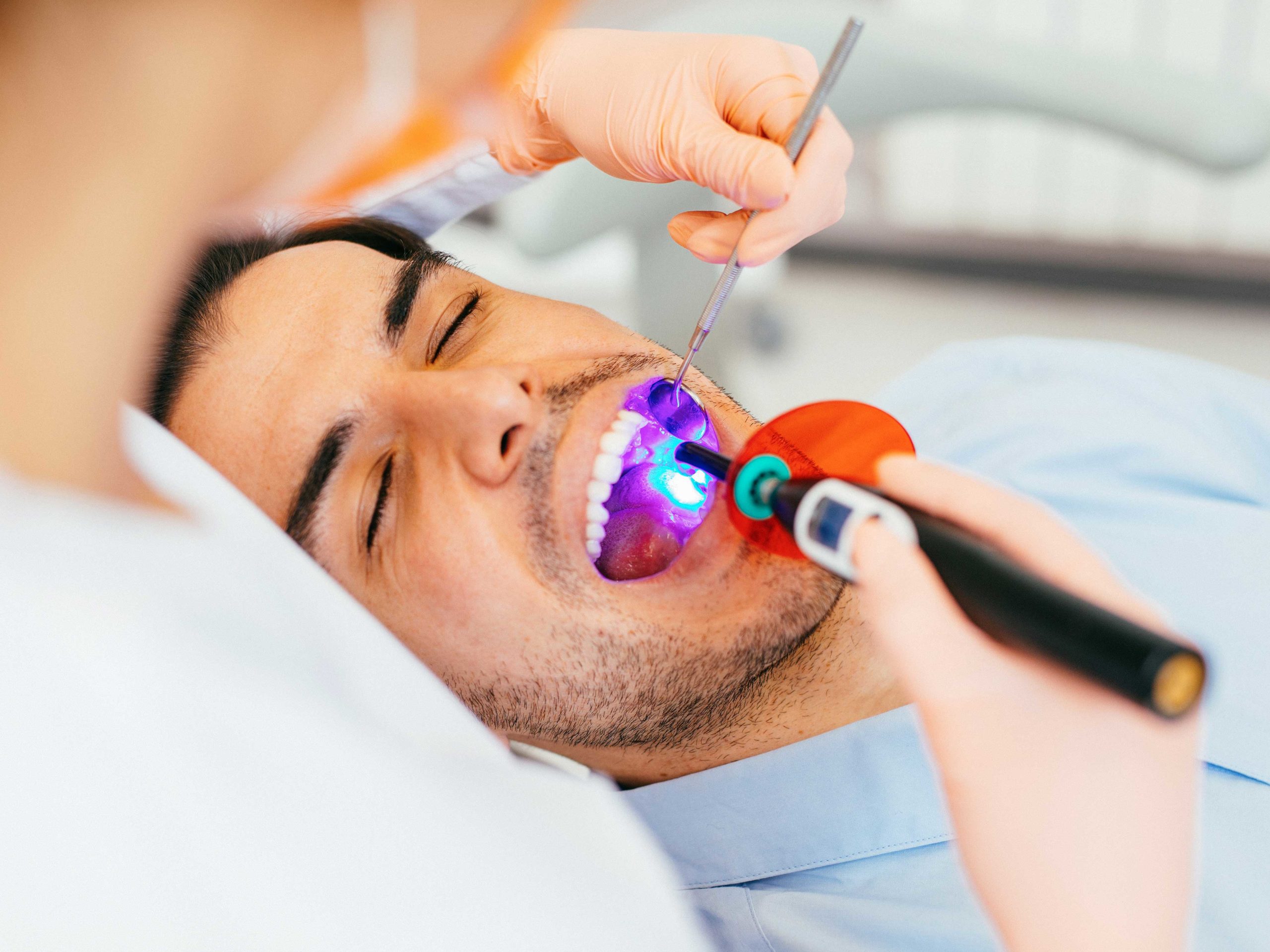The Complete Guide To Modern Dental Fillings
Getting a cavity is never fun and though you may fear going to the dentist (it’s a real thing known as dentophobia,) it’s important to get dental check-ups and regular cleanings to prevent cavities and to catch them in their early stages. That tiny hole in your tooth can turn into a big problem if it’s not fixed so it’s important to have cavities filled as soon as possible. Otherwise you risk damage to your root system and losing the tooth to disease. If you’re afraid of having fillings because you worry about things like mercury exposure or pain, then read on to learn about modern day dental filling options and care. Dentistry has come a long way, and there are approaches that can protect your smile in ways you can feel good about. There are also some cool facts about tooth care in the old days. Hint – You might be thankful for the dentist after reading it!
We’ve Come A Long Way – The History of Dental Treatment
Tooth Decay and Brushing
Then
Tooth decay and cavities were thought to be caused by tooth worms and up until the 1800’s dentists didn’t really exist. The first toothbrushes were made in China from hog hair, and one toothpaste recipe in the 18th century included burnt bread! An earlier record of toothpaste exists from Egyptian times. This paste was probably a bit more effective since it contained mint leaves, iris flowers, salt and pepper, and because the Egyptians used honey for pain. Honey is a natural antibacterial so it would have provided some relief.
Now
Modern dental hygiene and care includes electric toothbrushes, fluoride toothpaste and sealants, and interdental cleaners to prevent cavities. Thanks to Pierre Fauchaud, known as the father of dentistry, it is understood that tooth decay is primarily caused by the acids from sugar and preventive care is necessary to prevent cavities. Once a cavity is formed, a filling is needed.
Dental Fillings
Then
One of the earliest “fillings” on record dates back to the Neolithic era, 6,500 years ago in Slovenia where a man’s canine tooth was filled with beeswax, according to published journals. There is evidence of drilling to get rid of a diseased tooth as early as 7,000 BC, but those were bow drills used by bead craftsmen. The first real dental drill wasn’t invented until 1864. Dentistry wasn’t considered a profession or regulated until the late 1800’s.
Modern Dental Fillings
The days of unregulated and painful dental procedures are gone. A tooth with a cavity can be saved through dental fillings. Getting a tooth filled today is a simple procedure with many filling materials to choose from, as well as sedation and pain solutions that make getting a filling a lot less stressful.
How Cavities Are Treated
What Are Cavity Symptoms?
Signs of tooth decay that indicate you may have a cavity include white spots on teeth, and tooth sensitivity to hot and cold or when you bite down.
What Should I Do If I Have A Cavity?
If you are going for routine dental check-ups (every six months is ideal) then a cavity will be caught early through a dental exam or x-ray. If you suspect you have a cavity in your tooth, (tooth sensitivity is often a sign) make an appointment. Digital x-rays will likely be taken to judge if you need a filling and the size and number of dental caries you may have. These x-rays can see small cavities in detail. Once it is determined you need a filling a treatment plan can be made. Luckily, most cavities can be filled easily in one appointment.
Does It Hurt To Have A Cavity Filled?
Today, there are many options to control pain which include a topical numbing agent to numb the gums and the area that the freezing will go into. Then a needle will be used in the numbed area to inject freezing so that you won’t feel the procedure. You may feel a small pinch or nothing at all. After that once you are completely frozen, the dead portion of the tooth will be removed, cleaned and filled with the material that is best for your situation. You may feel a sensation of pressure, but there won’t be pain. Lasers now commonly used for whitening are starting to be adapted for other procedures and may be offered as an alternative to drilling as well.
What Is The Most Common Type Of Filling Material For Cavities?
The most common type of filling is an amalgam filling. It is composed of various metals including silver and mercury. This was the go to standard for many years due to its durability and lack of alternatives. It continues to be used today because it is still a cheaper option, and it is said to be more durable for molars or areas of the mouth that must withstand a lot of pressure. However; many people are concerned about the safety of amalgam fillings since a small amount of mercury is released through chewing and mercury has been linked to adverse health effects. Dentists in the past were limited by their choices of other reliable material but today there are other filling options.
What Are Modern Dental Fillings Made Of?
Modern day fillings are made of materials other than metal, are mercury-free and are the same shade as teeth. For this reason they are referred to as tooth-coloured fillings. In recent years, tooth-coloured fillings have risen in popularity and efficacy. They are made of plastic, silica, glass and porcelain. The most commonly used tooth coloured fillings are composite fillings (made from plastic) as they are the most durable option out of the three.
What Are The Benefits To White Fillings?
The Benefits To Tooth-Coloured Fillings Also Known As White Fillings Are:
- Mercury Free- Some people are still concerned about amalgam and more traditional fillings since they contain mercury which can have adverse health effects
- Less Tooth Loss- With metal fillings that are wedged in the tooth, more of your tooth’s surface must be removed to accommodate that filling. Composite fillings bond with the surrounding tooth structure, meaning more of the existing tooth is kept.
- Cosmetic Appeal- Many patients feel that the look of tooth-coloured fillings which are made to match the colour of your teeth are more appealing than their metal counterparts.
A Cavity Is A Warning
Do Cavities Always Have To Be Filled?
Remember when you were a kid and you heard that tone in your parent/caregiver’s voice asking you to do something but you were busy watching TV or playing a video game so you didn’t respond right away? If you ignored the first request, chances are you got a warning. If you continued to watch TV, that warning would likely progress into a response you could no longer ignore. Cavities are like that. They may start out small, but ignore them and you will be in even bigger trouble.
What If I Leave A Small Cavity Untreated?
Though at times your dentist may wait if a cavity is so small it’s too difficult to fill, it will eventually need to be filled. As mentioned earlier, cavities, if left untreated don’t go away. They simply turn into bigger cavities.
What Are The Risks To Untreated Cavities?
Untreated Cavities Can Increase Your Risks For Things Such As:
- Invasive Dental Procedures – Once deep tooth decay sets in it can injure or crack a tooth and it can then infect the root of the tooth. This requires a root canal to clean out the infected pulp.
- Tooth Loss – The goal of getting a filling is to save and preserve your natural tooth. Once a cavity gets too large to fill, alternate measures such as a root canal might be necessary, and in some cases the tooth may need to be pulled to avoid risking damage to the rest of your teeth. Then you will need to look into tooth replacement/restoration
- Infection – A cavity is an infection in a diseased tooth. When it’s left untreated that infection can travel to the root of the tooth, and your bloodstream through what’s known as an abscess. This can be a very serious condition, that if untreated can be life-threatening.
Fun Facts
Before Dentistry Was Regulated Here Are Some Things You Might Have Experienced:
Barbers As Dentists.
Just a little off the sides, and oh yeah, the back molar too…
It’s true. In many cases in Europe in the Middle Ages, the barber was responsible for a cut, a shave and in some cases pulling teeth and amputating limbs.
Dentistry As A Circus Act.
Painless Parker was a dentist who is famous for helping to regulate the dental industry, not because of good practices, but because his bad practices showed the need for regulation. He traveled through town with the circus offering patients a shot of whiskey before pulling their infected tooth for a cost of $5 assuring them it would be painless, then had the band play loudly to drown out the cries of pain. He reportedly pulled over 300 teeth a day! It wasn’t until he lost his license to practice in Canada and several states that certain regulations for dentistry were mandated.
The Future of Dentistry
Modern dental fillings and treatments have evolved considerably and gone are the days of painful procedures and questionable practices. More advancements are made every day. Our clinic even uses 3-D printing as an option for tooth replacement and is the only office to offer intraoral scanners to get a full picture of your oral health.
Cavity Prevention
The best thing to do is to avoid having to get a filling in the first place. Practice good dental hygiene and schedule regular appointments for screening and cleanings. A study conducted by the University of Sydney suggests that tooth decay doesn’t have to progress into a cavity, and can be stopped with fluoride, dental sealants, proper dental hygiene and reducing sugar exposure. Prevention is key if you want to avoid having a filling. Once a cavity forms it is too late. Be sure to make an appointment if you are experiencing any cavity symptoms such as tooth sensitivity or you suspect tooth decay.
Appointment Request
If you’re interested in any of our procedures, and would like to meet with one of our dentists to discuss options, costs and get additional information, complete this short form and we’ll give you a call to arrange for a no-obligation appointment at our Barrie clinic.










